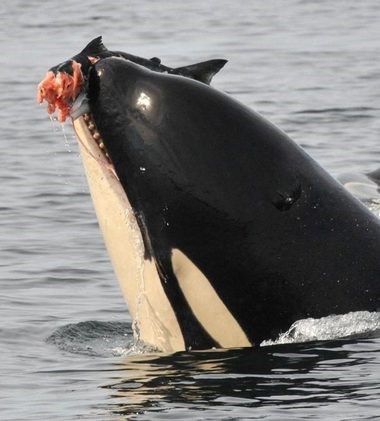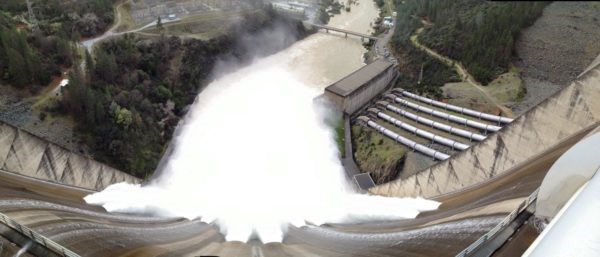
Killer Whale Declines and How They Could Affect Ocean Salmon Fishing

by GGSA Staff
8-31-2019
There’s talk on the docks about possible new future fishing regulations meant to help salmon-eating killer whales. We want to take a minute here to bring you up to date on what’s going on.
Two groups, the Center for Biological Diversity and the Wild Fish Conservancy sued the federal government last April to force it to update an analysis of how salmon fishing is affecting a group of endangered orcas, or killer whales, known as the southern residents. The southern residents are an extended orca family historically centered around the San Juan Islands in Washington state that eat salmon, almost exclusively. They’re listed as endangered under the federal Endangered Species Act.
The federal National Marine Fisheries Service (NMFS) got the lawsuit stayed for the time being by agreeing to update the analysis and release the results by the end of April 2020. At this point, no one knows if NMFS might call for possible restrictions to ocean salmon fishing to leave more salmon for the orcas to eat. If they do, would that just affect fishing off the mouth of the Columbia River in April, or in Monterey Bay in March, or off the Washington coast in summer? No one knows. How might NMFS calculate how much fishing to restrict and where? If they’re guessing, whatever future regulations they create might be vulnerable to legal challenge.
Unlike high seas “transient” killer whales that are known to eat sea lions and other marine mammals, the residents orcas eat only salmon. They commonly cruise up and down the west coast, as far south as Monterey and as far north as Canada to find king salmon.
They may have evolved to eat salmon-only back in the day when 100 pound kings commonly spawned in the upper Columbia River, above what is now Grand Coulee Dam. Those big fish were known to feed in the ocean off Washington’s Olympic Peninsula in long past winters. The fabled 100 pounders from the upper river were entirely wiped out, sent to extinction by construction of Grand Coulee Dam which had no fish ladder.
In addition, huge salmon runs used to flood past the San Juan’s in northern Puget Sound annually on their way up the British Columbia’s Fraser River. We know that in recent times the orcas would stage in the ocean off the mouth of the Columbia River during the spring to gorge on Columbia River spring run salmon. With those huge volumes of salmon hundreds of years ago, one can see how a smart group of orcas figured a way to make a fulltime living eating nothing but. But those days are gone. When they dammed the Columbia and Snake Rivers, historic runs of 16 million shrank to about one million. Fish farms growing zillions of Atlantic salmon in British Columbia have released huge volumes of pathogens into west coast Canadian waters that are believed to be connected to recent failures of salmon runs in the once mighty Fraser River. What’s an orca to do? Well… this summer they’ve moved shop to the outer waters of Vancouver Island where they are probably finding decent king salmon. Some think that long term, they may pull up stakes and relocate to areas north that still have more reliable king salmon runs.
The State of Washington has committed to spending over $1 billion to help the orcas, including money to vastly increase production of hatchery king salmon. Oregon and California are having internal discussions but so far NMFS hasn’t required either state to curb ocean salmon fishing or increase hatchery production. Groups including GGSA, PCFFA and others in California have broached the issue with CDFW. So far, CDFW has taken a wait and see approach.
Some reports suggest NMFS is likely to bless greater hatchery production, at least in Washington, as long as the ratio of hatchery to natural spawned king salmon on the spawning grounds doesn’t get too lopsided. We’ll see.
In an action with some possible bearing on the issue, GGSA is working through the state legislature on a bill that would accelerate additional salmon production. Senate Bill 69 (or SB 69, also known as the Ocean Resilience Act of 2019), authored by Senator Scott Wiener (D-San Francisco), is currently pending in Sacramento. The effort here is primarily to increase survival of hatchery fish through adoption of best practices.
Meanwhile, the US Interior Secretary David Bernhardt, has been leading an effort to divert more salmon water from the Sacramento Valley, through the Delta, south to huge orchards in the dry western San Joaquin Valley. This water historically fostered large king salmon runs before the federal water project built Shasta Dam and started using the river as a delivery canal. NMFS scientists were tasked with determining what affect Bernhardt’s boosted water diversions would have on salmon and the southern resident killer whales. They found that increasing diversions from the Delta would be very harmful to all runs of Central Valley salmon and by extension, to the killer whales too. But that wasn’t the answer Bernhardt wanted so he arranged to replace the 20 to 30 NMFS salmon specialists who wrote the report with a new crew to rewrite it. The new version is due out soon, stay tuned.
Probably the best protection from Bernhardt’s efforts are in a bill by Senate President Pro Tem Toni Atkins (D-San Diego). Her bill, SB 1, requires the state to adopt existing salmon protections, including Delta pumping restrictions, until the state can review and possible revise them. GGSA strongly supports this bill.
It’s obvious that salmon fishermen didn’t create the circumstances that deprive the orcas of their traditional salmon stocks, and yet we’re being targeted to compensate for habitat destruction caused by dams and water diversions. We’re watching and will keep you updated as new information comes in.
Shasta Lawsuit: Salmon Win in Round One
We told you about a lawsuit GGSA and allies filed in May against the Westlands Water District to stop the raising of Shasta Dam. Westlands Water District, in the dry western San Joaquin Valley, relies on the water historically used by salmon 400 miles away to grow their almonds and pistachios. Raising the dam to capture more of the natural flow of the Sacramento River which would be damaging to all life downstream, especially salmon. That goes for both natural spawned salmon as well as hatchery salmon released in Sacramento Valley hatcheries.
The US Fish and Wildlife Service warned of the damage raising the dam would do but the White House is ignoring that warning.
Federal law requires the federal Bureau of Reclamation to have a local “cost share partner” to pay for part of the project. But state law forbids any state agency, (and Westlands is considered one), from participating in any project that would destroy any river protected under California’s Wild and Scenic Rivers Act. The McCloud River, which flows into Lake Shasta, is one such protected river and would lose at least a mile at its bottom end if the dam is raised and lake levels rise. The State of California also filed a suit against Westlands, alleging violation of the state’s Wild and Scenic River Act.
In June the court granted the state a preliminary injunction basically telling Westlands to cease and desist, which they’re doing for the time being. Westlands appealed but lost. The case is scheduled for a full trial next spring. . This isn’t over yet and we’re still in court.
Fishing Trips
Kids, ladies and Sacramento agency staff and staff from allied conservation groups all experienced this year’s good salmon fishing thanks to trips put together by the Golden State Salmon Association. GGSA’s view is that nothing substitutes for the experience of ocean salmon fishing and the subsequent sharing of one of the state’s finest natural foods. We believe the more people that experience this, the better. One can talk about the value and benefits of salmon or one can take someone fishing… The latter approach sticks for years and great stories are born. If you follow our facebook page, you’ve seen some of the photos.
The kids went fishing thanks in large part to a fund established by the late Captain Roger Thomas. Thomas was captain of the charter boat Salty Lady, a founding member and chairman of the board for the Golden Gate Salmon Association. He was also a lifelong advocate to keep west coast salmon fisheries alive and sustainable.
Getting more youth and future generations out on the water fishing was very important to him. When Roger passed away in 2017, he established a fund through GGSA to take kids fishing.
The Golden Gate Salmon Association is a coalition of salmon advocates that includes commercial and recreational salmon fisherman, businesses, restaurants, a native tribe, environmentalists, elected officials, families and communities that rely on salmon. GGSA’s mission is to restore California salmon for their economic, recreational, commercial, environmental, cultural and health values. Currently, California’s salmon industry is valued at $1.4 billion in economic activity annually in a regular season and about half that much in economic activity and jobs again in Oregon. The industry employs tens of thousands of people from Santa Barbara to northern Oregon. This is a huge economic bloc made up of commercial fishermen, recreational fishermen (fresh and salt water), fish processors, marinas, coastal communities, equipment manufacturers, the hotel and food industry, tribes, and the salmon fishing industry at large.
Photos
Website Hosting and Design provided by TECK.net



